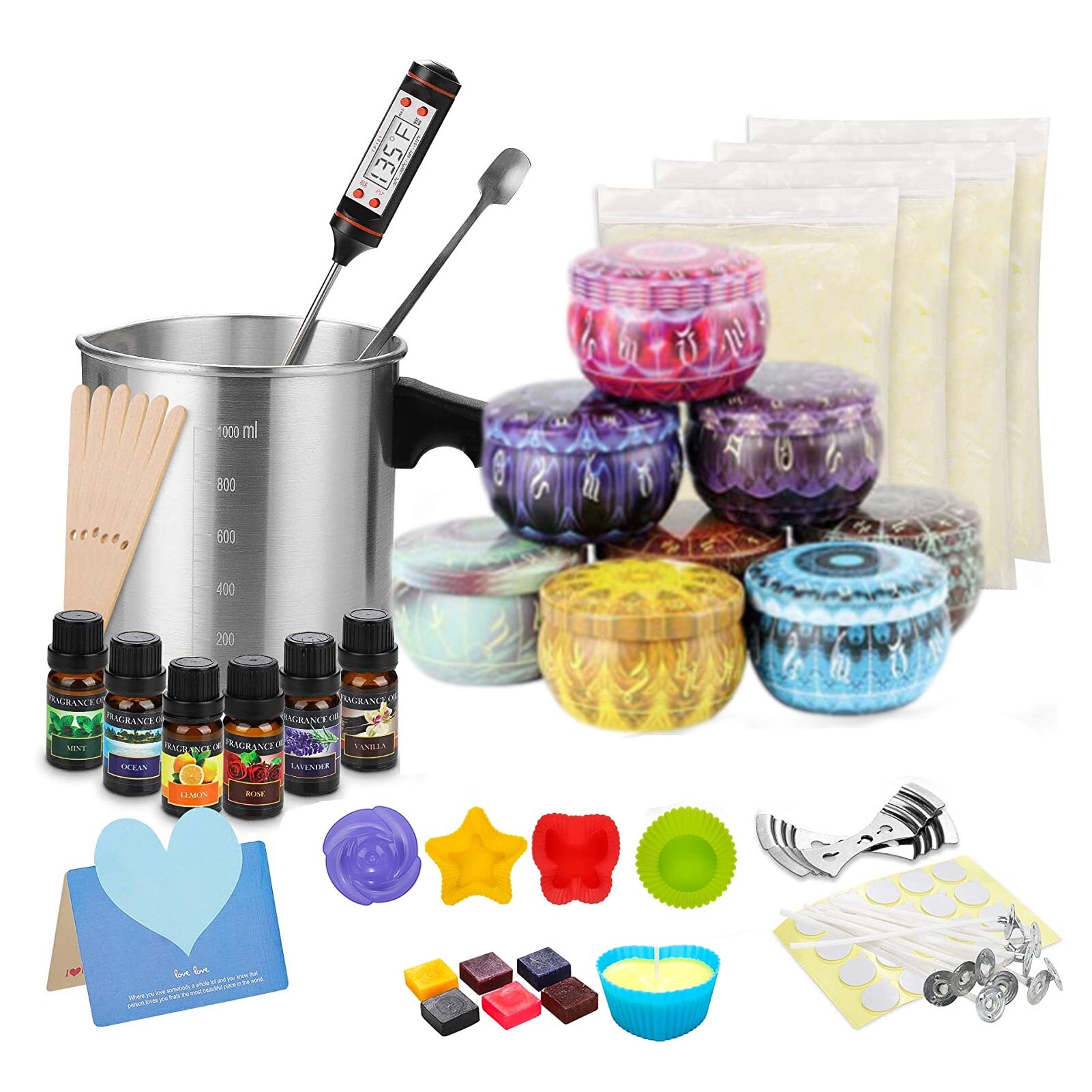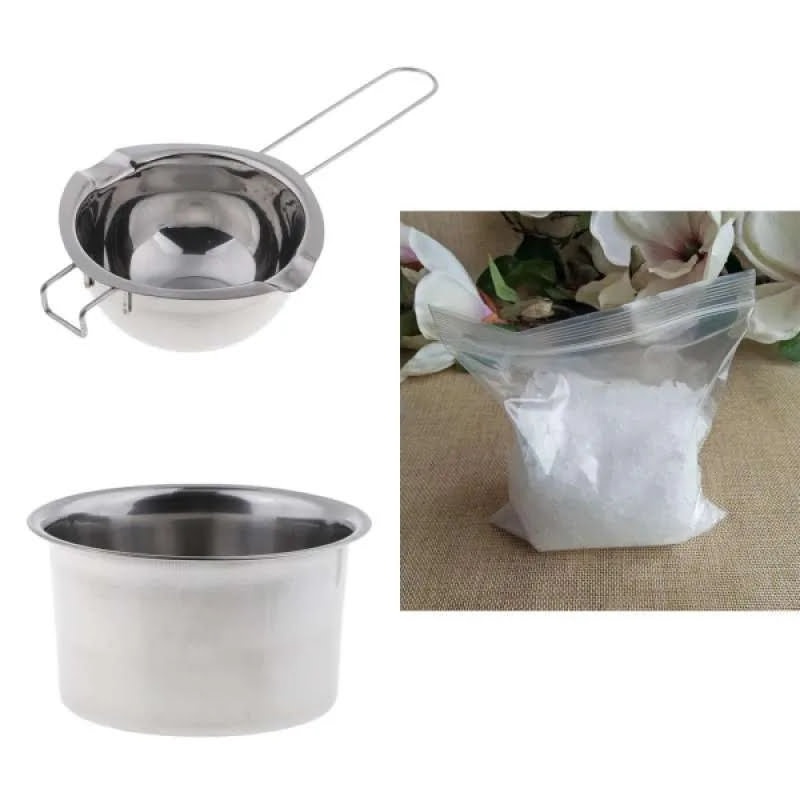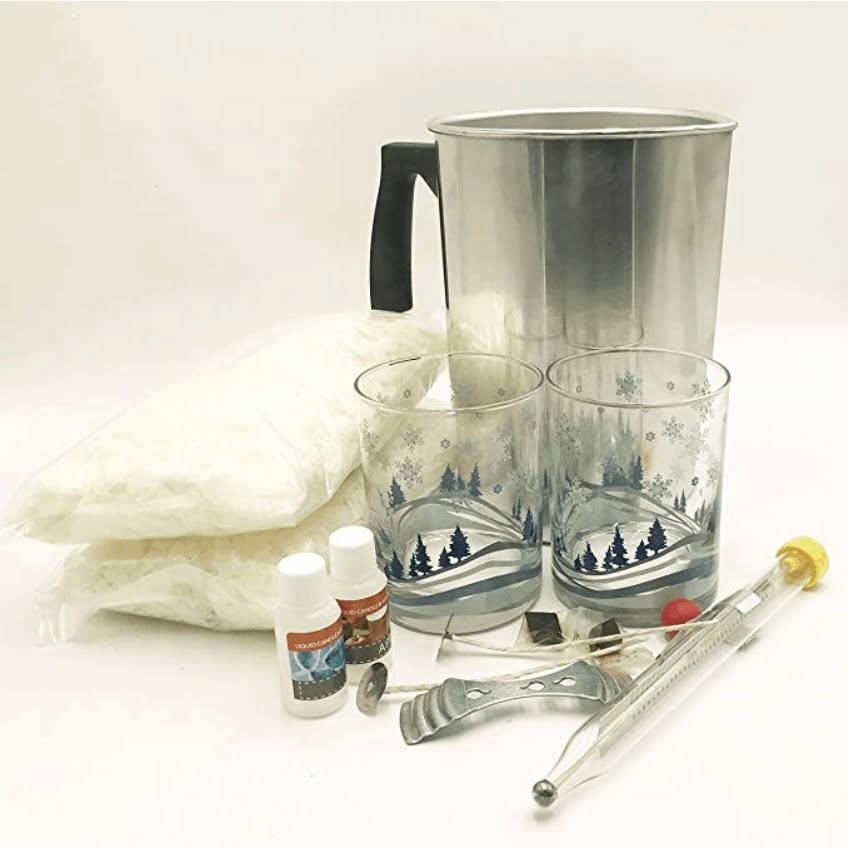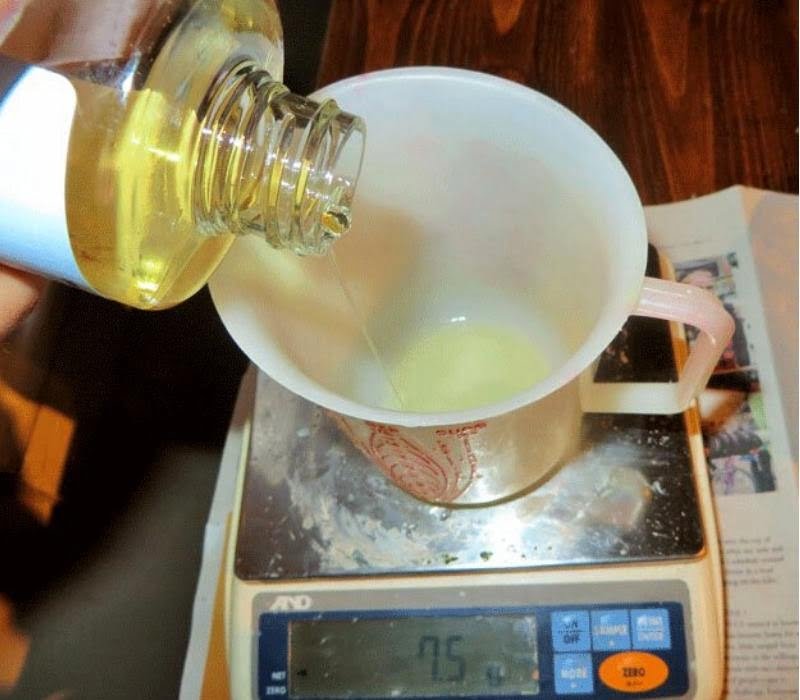When making candles, one of the key factors to consider is the length of the candle wick. The length of the wick plays a crucial role in achieving a clean and efficient burn, as well as determining how long the candle will last. In this article, we will explore the importance of a properly sized candle wick and delve into various factors that influence wick length.
Choosing the right candle wick length is essential for achieving optimal performance for a variety of candle sizes and types. Factors such as the diameter of the candle, type of wax used, fragrance load, and desired burn time all have an impact on determining the ideal length for the wick.
Finding the perfect balance between too short and too long can be a challenge. A wick that is too short may result in incomplete burning, tunneling or poor scent throw, while a wick that is too long can lead to excessive smoke, soot buildup, or an uneven burn. With so many variables at play, it is important to understand how to determine the ideal candle wick length and make informed choices when crafting your own candles.
In the following sections of this article, we will dive deeper into understanding candle wick length and its influence on burn time. We will also provide tips on testing different lengths to achieve desired results and discuss common mistakes to avoid when choosing a candle wick length. Additionally, we will explore how the size of the wick impacts different candle making techniques and highlight safety considerations for proper burning.
By gaining a comprehensive understanding of these aspects, you will be equipped with the knowledge needed to select the right candle wick length for various types of candles including pillars, tapers, and container candles. Let us embark on this journey together to masterthe art of selectingthe perfectcandlewicklength.
Understanding Candle Wick Length
When it comes to making candles, the length of the wick plays a crucial role in the overall performance of the candle. The wick length determines how efficiently the candle burns, affects the burn time, and contributes to the safety of the candle. Understanding the factors that influence wick length is important for achieving optimal results in candle making.
One of the key factors that determine the ideal wick length is the diameter of the candle. Generally, larger diameter candles require longer wicks to ensure a steady and complete burn. On the other hand, smaller diameter candles necessitate shorter wicks to prevent excessive flame height and inefficient burning. It is essential to consider this factor when choosing or making your own wicks for different candle sizes.
Another factor to consider is the type of wax being used. Each wax type has unique characteristics that can affect how it interacts with the wick during burning. For example, soy wax tends to require a larger size wick compared to paraffin wax due to its lower melting point and slower burn rate.
Beeswax also requires a larger size wick due to its denser nature and higher melting point. It is important to research and experiment with different wick lengths according to your chosen wax type for optimal results.
The fragrance load or additives in your candles can also impact the required wick length. Certain fragrances can affect how effectively a candle burns, causing issues such as tunneling or excess soot production if not paired with an appropriate size wick. Additives like colorants or UV inhibitors can also affect burning characteristics and might necessitate adjustments in wick selection.
Understanding these factors will help you choose an appropriate size wick for your specific candle-making needs, ensuring a safe, efficient burn with minimal issues like mushrooming or incomplete combustion. Experimentation and testing are crucial in finding the perfect balance between flame height and burn time. In the next section, we will explore how to determine the ideal candle wick length for different candle sizes.
How to Determine the Ideal Candle Wick Length for Different Candle Sizes
Determining the ideal candle wick length is crucial to ensure that your candles burn properly and efficiently. The length of the wick plays a significant role in how a candle burns, affecting factors such as burn time, flame size, and even safety. This section will provide a step-by-step guide on how to determine the ideal candle wick length for different candle sizes.
- Measure the diameter of your candle: The first step in determining the ideal wick length is measuring the diameter of your candle. Use a ruler or calipers to measure across the widest part of the candle. This measurement will serve as the basis for selecting an appropriate wick size.
- Consult a wick size chart: Once you have measured the diameter of your candle, refer to a wick size chart. These charts are readily available online or in candle making books. The chart will match different wick sizes with corresponding candle diameters.
- Consider the type of wax and fragrance: It is important to take into account any additional factors that might affect burn performance when selecting a proper wick length. Different types of wax and fragrance oils can impact how a candle burns. For example, certain fragrances might require a larger flame or slower burn rate.
- Test and adjust: After selecting a wick based on your measurements and considering other factors, it is recommended to conduct test burns before producing candles in larger quantities. Burn several candles with differing lengths of wicks and observe their performance. Note any issues such as excessive smoking or tunneling, which indicates an incorrect wick selection. Based on these tests, make necessary adjustments until you achieve optimal burning characteristics.
- Keep records: It is essential to keep records of your test burns and notes on each variation tested, including type of wax, fragrance used, burning time, and overall performance. These records will make it easier to reproduce successful candles with the appropriate wick length in the future.
Determining the ideal candle wick length might require some experimentation and fine-tuning, but with careful measurements, research, and testing, you can achieve candles that burn beautifully and effectively. Always prioritize safety when working with candles and ensure proper ventilation during test burns to avoid any fire hazards.
| Candle Diameter (inches) | Ideal Wick Length (inches) |
|---|---|
| 1 | 3-4 |
| 2 | 5-6 |
| 3 | 7-8 |
Candle Wick Length and Burn Time
When it comes to making candles, finding the perfect balance between the candle wick length and burn time is crucial. The length of the candle wick directly impacts how long the candle will burn for and how efficiently it will melt the wax. Achieving the right balance is essential for creating candles that burn evenly and have a satisfactory burn time.
The length of the candle wick is influenced by several factors. Firstly, the diameter of the candle plays a significant role in determining the appropriate wick length. As a general rule, larger candles require longer wicks to ensure an even burn across the entire surface. On the other hand, smaller candles need shorter wicks to prevent excessive dripping or tunneling.
Another factor to consider is the type of wax being used. Different waxes have different melt points, which affects how efficiently they are consumed by the flame. For example, soy wax generally has a lower melt point than paraffin wax, so a longer wick may be needed to ensure that all of the wax is melted and consumed during burning.
To determine the ideal candle wick length for different candle sizes, it’s important to conduct testing. This can be done by making sample candles with varying wick lengths and observing their performance during burning. Pay attention to whether there is any excessive smoking or mushrooming (carbon buildup) on top of the flame as these indicate an improperly sized wick.
The goal is to find a balance where the flame burns steadily without flickering or producing excess soot, while also allowing enough heat to melt an appropriate amount of wax for continuous burning. It may take some trial and error before finding the perfect balance, but with patience and observation, you’ll be able to create candles that burn beautifully and efficiently.
Remember that choosing the right candle wick length goes beyond just achieving an aesthetically pleasing burn time – it also plays a crucial role in ensuring safety during use. A properly sized wick reduces the risk of the flame becoming too high or producing excessive heat, which can lead to accidents.
Always prioritize safety when deciding on the length of your candle wicks, and consider seeking guidance from experienced candle makers or consulting reliable resources for specific recommendations based on the type of candle you are making.
Testing Different Candle Wick Lengths
When it comes to making candles, testing different wick lengths is a crucial step in ensuring optimal burn performance. Finding the right wick length can be a trial-and-error process, but with some helpful tips and tricks, you can streamline the testing phase and achieve excellent results.
One tip for testing different candle wick lengths is to start with a slightly longer wick than you think you need. This allows for more options to trim the wick later if necessary. By beginning with a longer wick, you can observe how it burns and adjust accordingly. Keep in mind that various factors, such as the type of wax used and the diameter of the candle, will influence the ideal wick length.
Another trick is to use visuals as guides when testing different candle wick lengths. After lighting a few test candles with varying wick lengths, observe how they burn for several hours. Look for signs such as excessive smoking or mushrooming at the top of the flame. Ideally, you want a clean and steady burn without these issues. Take note of which wick length produces the desired results and make adjustments as needed.
Additionally, consider conducting your tests in controlled environments free from drafts or excessive air circulation. Air flow can affect how a candle burns, so eliminating this variable during testing will provide more accurate results. This may involve setting up a specific area where you can monitor each test candle closely without any external factors interfering.
By employing these tips and tricks during your candle-making experimentation, you’ll be able to fine-tune the perfect combination of wax, vessel size, and wick length for each unique project. Remember that patience is key when conducting these tests because it may take multiple tries before finding the ideal candle wicking ratio. But once you master this skill, your homemade candles will have optimal burn performance while providing an inviting ambiance in any space.
The Role of Wick Size in Different Candle Making Techniques
The role of wick size plays a crucial role in the success of various candle making techniques. Different candle making techniques require different types and sizes of wicks to ensure optimal performance and desired results.
One important technique where the choice of wick size is significant is in container candles. Container candles are those that are poured into containers such as glass jars or tin cans. The size of the container directly affects the selection of the wick size.
A larger container would require a longer and thicker wick to create an even burn pool and prevent tunneling. On the other hand, a smaller container would need a shorter and thinner wick to avoid excessive heat buildup that can result in cracking or shattering of the container.
Another candle making technique that relies on proper wick sizing is pillar candles. Pillar candles are standalone candles with no container, standing tall like a pillar. The width and height of the pillar determine the appropriate wick size. A wider pillar requires multiple wicks or a larger sized wick to ensure even burning across its surface. Similarly, a taller pillar may need a longer wick to provide enough fuel for a consistent flame.
When it comes to taper candles, which are long, slender candles with a narrow base that gradually widens towards the top, selecting the correct wick length is crucial for proper burning and even melting. Taper candles usually require longer wicks compared to other types since they burn at an angle due to their shape. This allows for efficient melting of wax along its entire surface area.
In summary, understanding how different candle making techniques interact with various sizes of wicks is essential for achieving desired results in candle making. Whether it’s container candles, pillar candles, or taper candles, each technique requires careful consideration when choosing the appropriate wick length for optimal performance and safety reasons.
Common Mistakes to Avoid When Choosing the Candle Wick Length
One of the most important aspects of candle making is choosing the correct candle wick length. However, there are several common mistakes that people make when selecting the wick length for their candles. Avoiding these mistakes is crucial in achieving a well-burning and long-lasting candle.
One common mistake to avoid is using a wick that is too short for the size of your candle. When a wick is too short, it can lead to poor burn quality, tunneling (where the wax burns down the center of the candle, leaving unused wax around the edges), and an inefficient use of wax.
To determine the ideal wick length, it is important to consider factors such as the diameter and height of your candle, as well as the type of wax being used.
On the other hand, using a wick that is too long can also pose problems. An excessively long wick can result in large flames, excessive smoke, and uneven burning. Additionally, if a wick is too long and not properly trimmed, it may cause soot buildup on the container or holder, which can be difficult to clean. It is essential to follow guidelines provided by candle making suppliers or conduct testing to find the optimal wick length for each specific candle.
| Candle Size | Ideal Wick Length |
|---|---|
| Small container (2-3 inches in diameter) | 4-6 inches |
| Medium container (3-4 inches in diameter) | 6-8 inches |
| Large container (over 4 inches in diameter) | 8-10 inches |
| Pillar candle (varying diameters and heights) | Depends on specific size and materials |
It is important to note that these recommendations are general guidelines and may require adjustments based on individual factors, such as the type of wax, fragrance load, and desired burn time. By avoiding these common mistakes and carefully considering the appropriate candle wick length, you can ensure that your candles burn safely, evenly, and beautifully.
The Impact of Wick Length on Candle Safety and Proper Burning
Importance of Wick Length in Candle Safety
The length of a candle wick plays a crucial role in ensuring the safety and proper burning of a candle. A wick that is too long can result in excessive flame height, which can lead to several safety hazards. For instance, if the flame is too tall, there is an increased risk of the candle tipping over, causing fire accidents.
Additionally, a long wick produces more soot and smoke, which can cause respiratory issues and dirty surrounding surfaces. Therefore, it is essential to understand the impact of wick length on candle safety to avoid potential risks.
Proper Burning with the Right Wick Length
Achieving a clean, even burn is another significant factor influenced by selecting the appropriate wick length. When the wick is too short, incomplete combustion occurs, resulting in tunneling or uneven melting of the wax. This not only reduces the scent throw and overall performance of the candle but also leads to wastage of wax.
On the other hand, a wick that is too long causes excess heat and may result in rapid burning and dripping wax. By choosing the right wick length for your specific candle type and size, you can ensure an optimal burn that maximizes fragrance release and extends the longevity of your candles.
Tips for Safe and Proper Burning
To achieve safe and proper burning with your candles, it is essential to consider some tips regarding wick length:
- Trim regularly: Keep your candle’s wick trimmed to about 1/4 inch before each use. Regular trimming helps maintain an ideal flame height and prevents excessive soot production.
- Follow manufacturer guidelines: Different types of candles require different lengths of wicks for optimal performance. Always refer to the manufacturer’s recommendations for selecting the correct wick length based on the specific candle type you are using.
- Monitor burning conditions: Pay attention to the environmental conditions while burning candles. Avoid drafts that can cause uneven burning and always place your candle on a heat-resistant surface.
By following these tips and understanding the impact of wick length on candle safety and proper burning, you can enjoy a worry-free candle experience while enhancing the ambiance of your space.
Choosing the Right Wick Length for Various Candle Types
Pillar Candles
When it comes to pillar candles, choosing the right wick length is crucial for a successful burn. Pillar candles are typically wider and taller than other candle types, so a longer wick is needed to ensure that the flame can reach the edges and melt the wax evenly. If the wick is too short, the candle may not burn all the way to the edges, causing uneven melting and wasted wax.
To determine the ideal wick length for a pillar candle, consider its diameter. A general rule of thumb is to choose a wick that is about two-thirds of the diameter of your candle. For example, if your pillar candle has a 3-inch diameter, you would select a wick that is approximately 2 inches long.
It’s important to note that different types of wax may require slightly different wick lengths. Beeswax candles, for instance, tend to burn slower than soy or paraffin candles. This means that you may need a longer wick for beeswax pillar candles compared to other types of wax in order to achieve optimal burning conditions.
Taper Candles
Taper candles are characterized by their long and slender shape. The key consideration when choosing the right wick length for taper candles is ensuring that it provides a clean and steady burn throughout the candle’s lifespan. If the wick is too short, it may result in tunneling – where only the center portion of the candle melts while leaving excess wax on the sides.
To determine an appropriate wick length for taper candles, measure from its base to about 1/2 inch above where you want it to start dripping. This will ensure that as your taper candle burns down, it will continue to have a beautiful and consistent flame.
However, keep in mind that taper candles made from different materials may require variations in wick length. Thin taper candles made from beeswax or soy wax may require a shorter wick length compared to thicker taper candles made from paraffin wax.
Container Candles
Container candles, as the name suggests, are candles that are poured into containers such as jars or tins. The choice of wick length for container candles is influenced by factors such as the diameter of the container and the type of wax used.
For container candles, it’s important to select a wick that will enable a full melt pool to form across the entire surface area of the candle. A full melt pool ensures that the candle burns evenly and prevents tunneling.
To determine the ideal wick length for a container candle, measure the diameter of your container and choose a wick based on recommendations provided by candle making suppliers or charts specific to the type of wax you are using. These resources will typically suggest various wick sizes based on different diameter ranges, making it easier for you to find the perfect fit for your container candle.
It’s worth noting that if you plan to use fragrance oils or additives in your container candles, they can affect how evenly and quickly your candle burns. Therefore, it may be necessary to experiment with different wicks and lengths to find what works best with your chosen materials.
Conclusion
In conclusion, mastering the art of selecting the perfect candle wick length is crucial for achieving optimal burn performance and safety in candle making. By understanding the factors that influence wick length, such as candle size and shape, wax type, and fragrance load, candle makers can ensure that their candles burn evenly and cleanly.
Determining the ideal candle wick length for different candle sizes involves testing and experimentation. Candle makers should consider conducting burn tests using various wick lengths to observe how they affect burn time, melt pool size, and overall performance. These tests can help them find the perfect balance between a wick that burns long enough to create an even melt pool but not too long that it leads to excessive smoking or mushrooming.
It is also important to consider the specific requirements of different candle types, such as pillars, tapers, and containers. Each type may have unique considerations when it comes to selecting the right wick length. Pillar candles, for example, require a longer wick to reach all the way to the edges of the mold, while container candles may need shorter wicks to prevent high flames from reaching too close to the container walls.
Frequently Asked Questions
How long should my candle wick be?
The length of a candle wick is an important factor in ensuring the proper burning of the candle. While there is no one-size-fits-all answer, it is generally recommended to trim the wick to about ¼ inch before lighting the candle. This length allows for a steady flame, reduces smoke and soot, and helps prevent any irregularities in burning.
However, for larger candles or those made from certain materials like beeswax, a slightly longer wick may be needed. It’s best to refer to the specific instructions or guidelines provided by the candle manufacturer to determine the optimum length for your candle wicks.
Does cutting the wick of a candle make it last longer?
Contrary to common belief, cutting the wick of a candle does not make it last longer on its own. The primary purpose of trimming the wick is to maintain optimal burning conditions and improve overall burn quality, rather than increasing its lifespan significantly.
A properly trimmed wick ensures that the flame doesn’t get too large and prevents excessive smoke or soot formation. While these factors indirectly contribute to a longer-lasting candle by promoting gradual and even burning, trimming alone won’t magically extend its total burn time.
How do you know when to cut a candle wick?
It’s essential to know when to cut a candle wick as it plays a significant role in maintaining safe and efficient burning. The ideal time for trimming the wick is before each subsequent lighting of the candle after it has cooled down completely between uses. Before relighting, check if the previous charred portion of the wick exceeds ¼ inch in length.
If it does, use scissors or specialized wick trimmers to trim it back to around ¼ inch above the wax surface or as directed by the manufacturer’s recommendations for that particular type of candle. By routinely monitoring and trimming your candle wicks, you can ensure clean burns with reduced smoke and eliminate potential hazards associated with excessively long or mushrooming wicks.

Welcome to my candle making blog! In this blog, I will be sharing my tips and tricks for making candles. I will also be sharing some of my favorite recipes.





